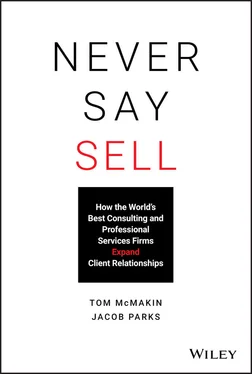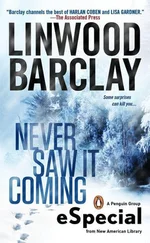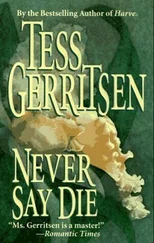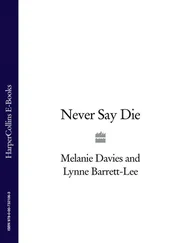1 ...6 7 8 10 11 12 ...15 Another way to think about business development in expert services companies is like hockey. It's a low percentage sport marked by long sell cycles. At PIE, if we bring on eight juicy new contracts a year, that can drive double-digit revenue growth. In that environment, it's important to pick our shots. For us, as with other expert services firms, that means working to expand our client mandates – the much higher percentage shots. Also, while winning a new client can take more than a year in some instances, add-on projects with existing clients can often get underway in a matter of weeks.
Esther Veenhuizen, marketing director for Protiviti's Global Financial Services Industry Practice, says, “If we have just one buyer in a firm, that's a huge risk. What if the person leaves?” All it takes is for that buyer to leave – by choice or by force – and we're back in the position of needing to land a “new” client all over again. We're in a much better position if we have buyers and champions all across a client organization. Then, when one of our buyers leaves, we have others who can vouch for us. When our main buyer is pitching our services internally, there are others in the room who can speak to the quality of our work and echo our buyer's proposal to engage with us.
Setting down the bow and taking up the plow is attractive on many levels. It is why firms emphasize account planning – a fancy way of saying, “Let's sit down and talk about how we might be more helpful to a roster of current clients.” So much has already been proven with a client, it is where the easiest harvest is found.
Sit in on those account planning sessions, though, and you will be surprised by how the conversation sounds muddled – a mishmash of industries, service sets, relationships, domain expertise, geographies, and respective appetites for risk.
“We should try and introduce our customer experience people to their ops team.”
“Here or in Europe?”
“I was thinking here, but now that I think about it all your relationships are out of London.”
“Have we ever done CX for a fintech company? I thought most of our case studies were in consumer products.”
“Don't worry about that. If you can get the team in front of their global COO, they can make the pitch. Nothing ventured, nothing gained.”
“Easy for you to say. They are our keystone client, and the truth is that all the work we have done to date is in continental baby care. I wouldn't know the global COO if he sat down next to me on the Tube.”
Knowing that farming is such a compelling place to play, let's see if we can't bring some structure to how we think about various add-on opportunities with a client.
CHAPTER 3 The Diamond of Opportunity
Sun gushes through an open window and pools on Susie Krueger's orange desk and lampshades. Susie loves orange; she says it puts her in a good mood. A quiet breeze spills in, rustling the leaves on her Spanish ivy.
Susie is a director at PIE and an accomplished facilitator. One of her projects is wrangling Am Law 100 chief financial officers (CFOs) and chief information officers (CIOs) for her client, Thomson Reuters, the nearly $6B information services company headquartered in Toronto. She says:
I'm focused. For 10 years we've been delivering great value to the Thomson Reuters team, helping them create substantive relationships with their most-likely buyers. We know they're happy, because they renew our contract every year and tell us how much they love working with PIE.
Susie has been able to grow the relationship little by little, but she's keenly aware that PIE hasn't yet been able to open the floodgates to the full breadth of potential work with them. She continues,
There is so much more we could be doing to help other parts of Thomson Reuters. We've managed to put them in a place where they are talking to CFOs and CIOs of the largest law firms – their exact target. They know our work. They know we do a great job for them.
But when she says, “they know our work,” she understands all too well that this universe of people who know the value PIE delivers is much smaller than it could or should be. “We've added a few projects and expanded our scope here and there over the past 10 years, but we certainly haven't maximized the ways we could be helping them.”
Susie's problem is one we hear from practice leads throughout the expert services industry. You might be doing excellent work, but the opportunities don't just start flooding in on their own.
There Is No One Thomson Reuters – and No One Opportunity
Susie's challenge is not proving PIE can do the job. She has the best-case study possible: an internal history of doing the work. As she thinks about all the ways PIE could help different buyers within Thomson Reuters, she understands one of the key complexities of her challenge: Thomson Reuters is not one person and it does not represent a single cross-selling opportunity. Thomson Reuters is a collection of professionals who, together, provide critical just-in-time information to legal, corporate, and business customers, helping them keep track of regulatory, tax, transaction, compliance, and news-driven changes. To anthropomorphize this large and complex group by assuming it acts like a single person who “knows” Susie's work – and presents a single opportunity for cross-selling – would be a mistake.
At best, a dozen or so people there know what Susie is doing and that she and her team are delivering excellent work. With a headcount of 25,000 people, most employees have never met each other, much less heard of Susie Krueger. Thomson Reuters, of course, is not an anomaly. Most corporations resemble a brand umbrella spread over a spider web of practices, industrial foci, and geographies, cobbled together over many years of organic growth and acquisition.
So, what are the distinct opportunities for growth within Thomson Reuters that Susie can and should consider? After interviewing rainmakers at accounting, law, engineering, IT, marketing, and consulting firms, both large and small, we've learned that experts who focus on growth of existing clients think about opportunities in six distinct ways. Each of these opportunities carries with it great promise, as well as unique challenges requiring different tactics and skillsets to successfully execute.
MORE: Doing more of the same work you are already doing with the same buyer in a client company
EXPAND: Doing different work (within your existing service lines) with the same buyer
EXTEND: Doing more of the same work you are already doing with a different buyer in the organization
REACH: Doing different work (within our existing services lines) with a different buyer in the organization
EVOLVE: Doing new work (that our firm hasn't done before) with the same buyer
INNOVATE: Doing new work (that our firm hasn't done before) with a different buyer in the organization
We're consultants, so naturally we wanted to give pithy names to each of these opportunities, and we wanted a diagram to show how they all relate. To us, the Diamond of Opportunity looks like this:

The easiest way to help a client is continuing to do more of what you've proven you can already do, with the buyer who already knows you can do it. This kind of work (MORE) is the base of the diamond. At the peak (INNOVATE) you find the most challenging kinds of opportunities – finding a way to help someone different in the organization (with whom you've never worked) doing a type of work that is new to you and your firm. In these instances, the bar for earning both trust and credibility is extremely high, making these projects tough to win. Between these poles are four other distinct opportunities to help clients; each requires a mix of skills needed to introduce your additional capabilities to clients and establish relationships with new buyers.
Читать дальше













